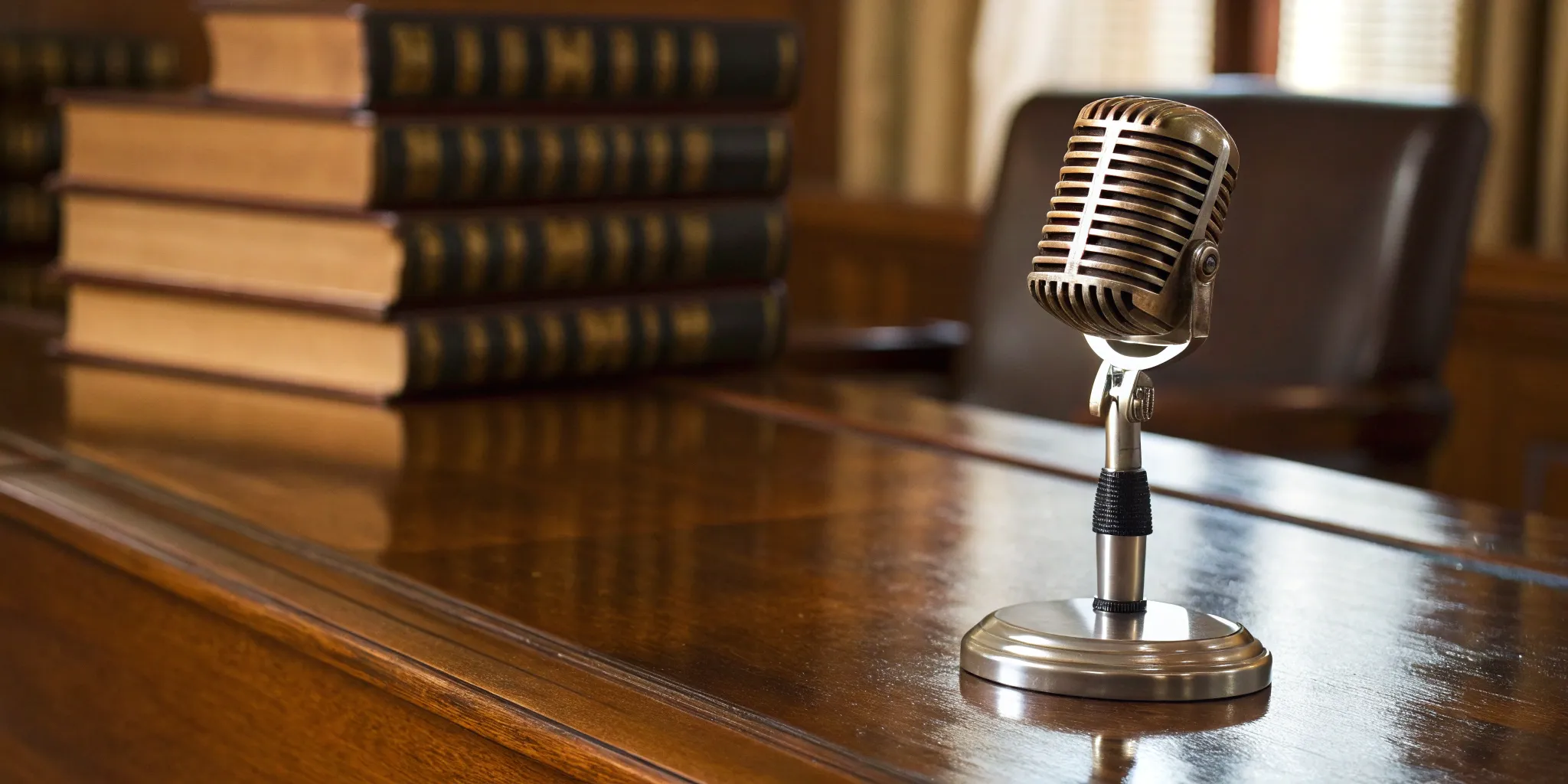You’ve written the book, built the company, and have a powerful message to share. But how do you get it in front of the people who need to hear it? This is where the strategic partnership between PR and mass media becomes your most valuable asset. It’s the engine that takes your story from your inner circle to a national conversation. Many people think it’s just about sending out a press release, but it’s a much deeper process of building relationships and providing real value to journalists. When you secure coverage in a respected publication, you gain powerful third-party validation that advertising simply can’t buy, positioning you as a credible leader in your field.
Key Takeaways
- PR is Your Strategy, Media is Your Stage: Public relations is the complete game plan for shaping your brand’s reputation, while media relations is the specific tactic of getting your story told by credible outlets. This partnership creates powerful third-party validation that builds trust in a way advertising can’t.
- Focus on Relationships, Not Just Pitches: The most impactful media coverage comes from building genuine connections with journalists. By understanding their work and providing real value, you establish yourself as a trusted source they will turn to time and again.
- Look Beyond Traditional Media and Measure What Matters: Success isn’t just about getting mentioned; it’s about reaching the right people on the right platforms—from major publications to niche podcasts. Track meaningful metrics like audience engagement and public sentiment to understand the true impact of your story.
How Do PR and Mass Media Work Together?
Think of public relations and mass media as partners in a powerful dance. PR choreographs the moves—crafting your story and message—while the media provides the stage and the audience. When they work in sync, the result is a compelling performance that captures public attention. This relationship is fundamental to building a strong personal or corporate brand. It’s not about just sending out a press release and hoping for the best; it’s about strategically engaging with the media to share your narrative in a way that feels authentic and newsworthy.
A Two-Way Street
The connection between PR and the media is a true give-and-take. Your PR team develops the core message you want to share, and then uses media relations to pitch that story to journalists, editors, and producers. In return, media outlets get access to credible sources, expert commentary, and fresh content to share with their audience. It’s a symbiotic relationship: you need their platform to reach a wider audience, and they need your stories to keep their readers engaged. This exchange ensures your message is not only heard but also presented in a context that adds to its credibility.
Shaping Public Opinion
When a respected news outlet features your story, it lends your message an incredible amount of weight. This is often called “third-party validation,” and it’s one of the most valuable outcomes of effective PR. People are more likely to trust information from an objective news source than from a paid advertisement. This trust is what helps shape public perception and build a positive reputation. For authors, founders, and CEOs, this validation positions you as a thought leader in your field, making your voice more influential and your brand more respected.
Defining Your Brand’s Public Image
At its core, public relations is the art of managing how information flows from you to the public. The ultimate goal is to cultivate a specific image and reputation. Unlike advertising, which pays for attention directly, PR works to earn it. By securing positive media coverage, you create a narrative that feels organic and genuine. This helps build a public image based on expertise, credibility, and authentic contributions to your industry. It’s about showing, not just telling, people who you are and what you stand for, creating a lasting impression that advertising alone can’t buy.
What’s the Difference: Media Relations vs. Public Relations?
It’s easy to use the terms “public relations” and “media relations” interchangeably, but they represent two distinct, yet connected, functions. Think of public relations as the entire orchestra, responsible for the overall performance and how the audience perceives the music. Media relations is the string section—a vital, specialized group that plays a critical role in bringing the composition to life.
Understanding the difference is key to building a powerful brand. Public relations is the broad strategy you use to shape your public image with everyone who matters—your customers, employees, investors, and the community. Media relations is a specific tactic within that strategy, focused entirely on building relationships with journalists, editors, and producers to secure positive coverage. When you get them working together, you create a brand story that resonates.
Defining the Core Differences
Let’s break it down. Public relations (PR) is the art of managing how your brand communicates with the world. It’s a big-picture discipline that covers everything from social media and community outreach to crisis management and internal communications. The goal of a complete public relations strategy is to build and maintain a positive reputation with all your stakeholders.
Media relations, on the other hand, is a specialized part of PR. Its focus is narrow and specific: to cultivate a strong, positive relationship with the press. The primary activity of media relations is to work directly with journalists and media outlets to get your story told. While PR might involve planning a charity event, media relations is the part that ensures that event gets covered on the evening news.
Where Their Goals Align
This is where the magic happens. While their functions are different, PR and media relations share the same ultimate goal: to build credibility and shape a positive public perception of your brand. Your PR strategy defines the core message—the story you want to tell about your company, your book, or your personal brand. Media relations is the vehicle that delivers that message to a wider audience through trusted news sources.
When a reputable publication features your story, it provides powerful third-party validation. This is often called earned media, and it’s incredibly effective because the endorsement comes from an objective source, not from you. This alignment is crucial; media relations executes the vision that the broader PR strategy creates, turning your key messages into credible, impactful news.
Making Them Work in Harmony
For your brand to truly stand out, PR and media relations can’t operate in silos. A successful media relations effort is always guided by a clear and thoughtful public relations strategy. Your PR plan sets the stage by defining your target audience, key messages, and long-term reputation goals. It’s the roadmap that ensures every press mention is consistent and contributes to the larger brand narrative you’re building.
Without a solid PR foundation, your media outreach can feel scattered and reactive. You might get a few nice mentions, but they won’t add up to a cohesive brand story. By integrating the two, you ensure every piece of media coverage reinforces your core message. This unified approach is what builds a strong, lasting reputation and helps you connect with the people who matter most—a process we specialize in for our clients at Leverage with Media.
How Mass Media Shapes Your PR Strategy
Mass media is the engine that drives public perception. For leaders like you, it’s not just about being in the news—it’s about directing the narrative. A well-crafted PR strategy uses mass media as a tool to build your brand, connect with your audience, and solidify your reputation. By understanding how to work with media outlets, you can ensure your story is told accurately and reaches the people who matter most. It’s the difference between letting the public define you and defining yourself for the public.
Getting Your Message Heard
At its core, public relations uses the news media to share your message with the world. While you can post on your own social media or blog, getting your story featured in an established media outlet provides a level of credibility that’s hard to replicate. This is where media relations comes in. It’s the specific practice of building relationships with journalists and producers to secure coverage. Think of it as a powerful amplifier. Your story, when told by a trusted third party, gains authority and reaches an audience far beyond your immediate network. Seeing a history of successful placements is key to understanding how this process translates into tangible results for your brand.
Connecting with a Wider Audience
Mass media offers unparalleled reach. From television and radio to major online publications, these channels can introduce your brand to millions of people almost instantly. This scale is exactly why your PR strategy is so critical. A few well-placed, positive news stories can significantly enhance your reputation and open doors to new opportunities. On the flip side, negative press can spread just as quickly. A proactive PR strategy helps you stay ahead of the conversation, ensuring that when your brand is in the spotlight, it’s for all the right reasons. It allows you to shape how a massive audience sees and understands your work and your mission.
Managing Your Story in a Crisis
When a crisis hits, the media will be the first to report on it. A strong PR strategy is your first line of defense. It’s about more than just damage control; it’s about transparently and effectively communicating your side of the story. During a challenging time, media relations helps you get accurate information out quickly through trusted channels, which can stabilize the situation and preserve trust. While your internal team communicates directly with stakeholders, your experienced PR team works with the media to frame the narrative responsibly. This preparation is vital for handling unexpected events and protecting the reputation you’ve worked so hard to build.
Using Media Insights to Guide Decisions
A smart PR strategy isn’t just about sending messages out; it’s also about listening to the conversation. By analyzing media coverage, you gain invaluable insights into how your brand is perceived, what your competitors are doing, and what topics are trending in your industry. This is where media monitoring comes into play. These tools track mentions of your brand across thousands of outlets, giving you a real-time look at your public image. This data is gold. It helps you measure the impact of your campaigns, spot potential issues before they escalate, and refine your strategy to ensure your message always hits the mark.
The Essential Toolkit for Media Engagement
To effectively engage with the media, you need the right tools in your corner. Think of it like a workshop—you can’t build a solid brand story without the proper equipment. These tools help you listen to conversations, share your message, manage your content, and measure what’s working. Getting a handle on this toolkit is a key part of any successful PR strategy.
Media Monitoring Platforms
You can’t be part of the conversation if you don’t know it’s happening. Media monitoring platforms are your eyes and ears, automatically scanning online, print, and broadcast media for mentions of your name, brand, or key topics. These tools collect important content 24/7, allowing you to understand how the media is shaping public perception of your brand. This isn’t just about vanity alerts; it’s about gathering real-time intelligence to inform your strategy, manage your reputation, and find new opportunities to engage.
Press Release Distribution Services
When you have news to share, you need an efficient way to get it to the right people. Press release distribution services send your announcements to a targeted network of journalists, media outlets, and newsrooms. This is a core part of media relations, helping you secure “earned media”—valuable news coverage you don’t pay for. Using a distribution service ensures your message reaches relevant reporters who cover your industry, increasing the chances of your story getting picked up and shared with a wider audience.
Digital Content Management Systems
Your website, blog, and social media channels are the platforms you own and control. A digital content management system (CMS) is the engine that runs them, allowing you to publish articles, update your bio, and share your story directly with your audience. For authors and CEOs, a company blog or a personal website is a crucial hub for maintaining a consistent brand voice. It’s your space to share insights, control your narrative, and build a direct relationship with your followers without relying on a media middleman.
Analytics and Reporting Tools
How do you know if your PR efforts are actually working? Analytics and reporting tools are essential for answering that question. They help you measure the impact of your media engagement by tracking key metrics. Success is often measured by how many times you’re mentioned in the news, the potential audience reach of a story, and whether the coverage was positive. These insights are vital for demonstrating the value of PR and refining your strategy to achieve even better client results.
How to Build Strong Relationships with the Media
Building a strong relationship with the media isn’t about sending a single press release and hoping for the best. It’s a long-term strategy grounded in mutual respect and value. Think of it as professional networking; you want to be a reliable, helpful resource that journalists can turn to. When you invest time in understanding their work and providing them with relevant, newsworthy stories, you create a foundation for lasting partnerships. This approach transforms your media outreach from a simple transaction into a collaborative effort, which is essential for getting your story told authentically. Our entire PR philosophy is built on creating these genuine connections.
Partnering with Journalists
The core of media relations is building good relationships with journalists and news outlets. Instead of just pitching your story, aim to become a trusted source. Start by doing your homework. Read their articles, understand their beat, and learn what kind of stories they cover. When you reach out, personalize your message to show you’re familiar with their work. Offer them exclusive insights or connect them with other experts in your field, even when it doesn’t directly benefit you. This generosity establishes you as a valuable contact they’ll remember. By treating journalists as partners, you’re not just asking for coverage; you’re contributing to their work.
Communicating Effectively
Your communication with the media needs to be clear, concise, and compelling. Journalists are incredibly busy, so get straight to the point. Your pitch should immediately answer the question, “Why should my audience care about this?” Prepare your key messages ahead of time and ensure all your communications are consistent and professional. Media relations primarily uses the news media to share your story, so it’s crucial that your message is polished and ready for a wide audience. A well-crafted message respects the journalist’s time and makes it easy for them to see the value in what you’re offering.
Earning Trust and Credibility
Trust is the currency of media relations. You earn it by being consistently reliable, transparent, and accurate. Always deliver on your promises, whether it’s providing a quote by a deadline or offering factual information. When a news outlet shares your story, it gives your message powerful “third-party validation.” People are more likely to trust what they read from an established news source than what they see in an advertisement. This earned credibility is one of the most significant outcomes of a successful PR strategy, and you can see examples of it in our client results.
Using Your Professional Network
Building a media list from scratch can be a challenge. Start by keeping track of journalists and editors who cover your industry. You can connect with them on professional platforms like LinkedIn or meet them at industry events. Nurture these connections over time by engaging with their work and offering helpful information without asking for anything in return. Of course, this process takes time. Working with a PR agency gives you immediate access to an established network of media contacts. If you’re ready to tap into a professional network, you can book a call with our team to get started.
How to Measure Your PR Success
Once your story is out in the world, how do you know if it’s actually making a difference? Measuring the success of your public relations efforts can feel less direct than tracking ad clicks, but it’s just as important. It’s about understanding the real-world impact of your narrative—not just counting how many times your name appears in print. True measurement goes beyond vanity metrics to show how PR is shaping your reputation, connecting with your audience, and contributing to your most important goals.
Thinking about measurement from the start helps you and your PR team define what success looks like for your brand. Are you aiming for greater name recognition, a shift in public perception, or more traffic to your website? By focusing on the right indicators, you can see a clear picture of how your investment in PR is paying off. Let’s walk through the key ways to track your progress and understand the value of your media presence.
Analyzing Your Media Coverage
The most straightforward way to measure PR success is by looking at your media placements. This is your starting point. Instead of just counting the number of articles you’re mentioned in, it’s crucial to assess the quality of that coverage. A feature in a major industry publication holds more weight than a brief mention on a small blog. Success is often measured by how many times you are mentioned, how many people might have seen the story, and if the coverage was positive. We focus on securing placements that put our clients in front of the right audiences in a meaningful way. Look at the publication’s reach, the prominence of your mention, and whether your key messages were included.
Tracking Public Sentiment
Beyond the numbers, you need to understand how the public feels about your brand. This is where tracking public sentiment comes in. Are people reacting positively to your story? Is the conversation around your name or company shifting in the direction you want? Analyzing what’s in the media gives you valuable clues about your audience and the market, which can help refine your business plans. You can monitor this through social media listening tools and media analysis to gauge the overall tone of the conversation. This qualitative data is essential for understanding if your PR strategy is building the reputation you want.
Measuring Audience Engagement
A great media placement is only the beginning. The next step is to see how your audience responds. Are people taking action after reading about you? PR success can be seen in bigger things like changes in how people see your brand or how loyal customers are. Look for tangible signs of engagement, such as an increase in website traffic following a feature article, more followers on your social media channels, or a jump in inquiries and leads. These metrics show that your story isn’t just being seen—it’s resonating with people and prompting them to connect with your brand on a deeper level.
Calculating Your Return on Investment
Connecting PR directly to revenue can be challenging, but it’s not impossible. The return on your investment often extends beyond immediate sales. For many of our clients, PR is vital because public trust directly affects their value and credibility. A strong public image can lead to more speaking opportunities, higher book sales, increased investor interest, and valuable partnership offers. By aligning your PR goals with your business objectives, you can draw a clear line between your media presence and your bottom line. When you invest in one of our PR packages, we work with you to define and track the outcomes that matter most to your brand’s growth.
How to Handle Common PR Challenges
Even the most well-crafted PR strategy can hit a few bumps. The media landscape is fast-moving, and challenges are part of the process. The key isn’t to avoid them entirely—it’s to have a plan for when they pop up. Whether you’re dealing with a story that’s not quite right or struggling to connect with the people who matter most, a proactive approach makes all the difference. Here’s how you can handle some of the most common PR hurdles with confidence.
Correcting Misinformation
In a 24/7 news cycle, misinformation can spread quickly. The best way to manage it is to be prepared. This starts with actively monitoring what’s being said about you and your brand. When you’ve already built solid media relationships, journalists are more likely to reach out for your side of the story before publishing something questionable. If a false narrative does appear, address it quickly and calmly. Have a clear, factual statement ready and provide it directly to the outlet that published the incorrect information. Staying professional and providing accurate details is the fastest way to set the record straight.
Keeping Your Message Clear
If your message is confusing, it’s easy for the media and the public to get the wrong idea. Consistency is your best friend. Before you even begin outreach, define the core talking points you want to communicate. It’s important to send clear messages and have good relationships with the press to guide the story. Make sure everyone who speaks for your brand is on the same page. Your website, social media profiles, and official statements should all reflect the same central narrative. This alignment ensures your story is told the way you intend it to be, without room for misinterpretation.
Reaching the Right Audience
Getting your name in a major publication is great, but it’s only truly effective if it reaches the people you want to connect with. Public relations is about more than just getting media mentions; it’s about creating and maintaining a positive image with your target audience. Take the time to identify who you want to reach. Where do they get their news? What podcasts do they listen to? Which industry leaders do they follow? Answering these questions allows you to focus your efforts on the outlets that matter, ensuring your story lands with maximum impact. Our client results show how targeted outreach gets the job done.
Building Trust with the Media
A strong, trusting relationship with journalists is one of your most valuable assets. It can lead to positive news coverage and is especially crucial during a crisis, as it gives you an open channel to share your perspective. You build this trust over time by being a reliable and helpful resource. Respond to inquiries promptly, provide accurate information, and respect their deadlines. Think of it as a professional partnership. When you prove yourself to be a credible source, journalists will be more likely to turn to you for expert commentary and feature your story. If you’re ready to build these connections, you can book a call with our team to get started.
How PR and Mass Media Are Changing
The relationship between public relations and mass media has always been dynamic, but the pace of change has accelerated dramatically. The clear lines that once separated how stories were told and who got to tell them have blurred. For leaders, authors, and entrepreneurs, understanding this new landscape isn’t just helpful—it’s essential for building a brand that lasts. The core goal of sharing your story remains the same, but the channels, strategies, and audience expectations have been completely rewritten. Staying current with these shifts is key to keeping your message relevant and impactful.
The Shift to Digital
Not long ago, getting your story out meant pitching to a handful of journalists at major publications. Today, the media landscape is a sprawling digital ecosystem. With the rise of social media, blogs, and independent creators, anyone can be a publisher. This means new ways of communicating are making the difference between PR and media relations less clear because everyday people can now share news like journalists. For your brand, this is both a challenge and an opportunity. While it’s harder to control the narrative, you also have more direct pathways to reach your audience. A strong digital footprint is no longer a “nice-to-have”; it’s the foundation of a modern PR strategy.
The New Rules of Content Strategy
Guesswork has no place in a modern PR plan. The most effective strategies are built on a deep understanding of the current media conversation. Analyzing what’s being said in the media gives you powerful clues about your market and what your audience truly cares about. This kind of media content analysis is invaluable for shaping your messaging. Instead of just pushing your story out, you can tailor it to fit into existing trends and discussions, making it far more likely to get picked up. This data-driven approach allows you to refine your business plans and ensure your PR efforts are strategic, targeted, and set up for success.
Working with Emerging Platforms
The definition of “mass media” has expanded far beyond television, radio, and newspapers. It now includes a vast array of digital platforms, from podcasts and YouTube channels to newsletters and TikTok. These emerging channels have a massive influence on culture and society, and they offer incredible opportunities to connect with specific, engaged communities. A comprehensive PR strategy must look beyond traditional outlets and identify the platforms where your ideal audience spends their time. Securing a feature on a top-tier podcast or collaborating with a respected creator in your niche can often deliver more impact than a mention in a legacy publication. Our team at Leverage with Media specializes in identifying these unique opportunities for our clients.
What’s Next for PR and Media?
So, what does the future hold? While the tools and platforms will continue to evolve, the fundamental partnership between PR and media relations will remain. PR is about crafting your core message, and media relations is the engine that helps spread that message through credible, third-party channels. Looking ahead, authenticity and direct audience engagement will become even more critical. Your audience wants to connect with the real person behind the brand. This means integrating your earned media placements with your owned content—like your social media and email list—to create a cohesive and trustworthy brand story. The most successful leaders will be those who embrace this integrated approach to build a lasting legacy.
Related Articles
- Media PR vs. Public Relations: Key Differences – Leverage with Media PR
- Media Relations in PR: A Step-by-Step Guide
- Media Relations Definition: A Complete Guide
- Smart Media Relations Strategies That Actually Work – Leverage with Media PR
- Blog Archives – Leverage with Media PR
Frequently Asked Questions
Is PR just for big announcements, or can it be an ongoing effort? Think of PR as a marathon, not a sprint. While it’s great for major launches or book releases, its real power lies in consistent, ongoing effort. A sustained strategy keeps your name and ideas in the conversation, positioning you as a go-to expert in your field. This involves regularly sharing your insights on industry trends or offering commentary on current events, which builds a strong, lasting reputation far more effectively than a single moment in the spotlight.
How long does it typically take to see results from a PR campaign? Building a meaningful media presence takes time. While you might see some initial traction within the first couple of months, the most significant results come from building momentum over a longer period. The first phase is about laying the groundwork: crafting your story and starting conversations with the right journalists. Lasting relationships and high-impact features are the result of consistent effort, typically taking several months to fully develop.
Why should I invest in PR when I can just buy ads? Advertising and public relations serve two very different purposes. When you buy an ad, you are paying to broadcast your own message. With PR, you earn the attention of a trusted, objective third party—the media. This “earned media” provides a level of credibility and authority that advertising simply can’t buy. People are more likely to trust a story written by a respected journalist than a message in a paid placement.
Can I handle my own PR, or is it better to hire an agency? You can certainly handle your own PR, especially when you’re just starting out. However, it requires a significant investment of time to research contacts, craft pitches, and build relationships. Hiring an agency gives you immediate access to an established network of media contacts and a team of experts dedicated to strategy. This allows you to focus on running your business while professionals manage the process of building your public image.
What’s the single most important thing for building a good relationship with a journalist? The most crucial element is to be a valuable resource, not just a person asking for a favor. Take the time to understand the topics a journalist covers and the audience they write for. When you reach out, offer them a story, an expert insight, or a unique perspective that genuinely helps them do their job. When you consistently provide value, you build the trust that leads to meaningful and lasting media partnerships.




































































































